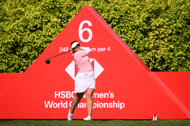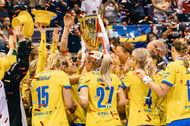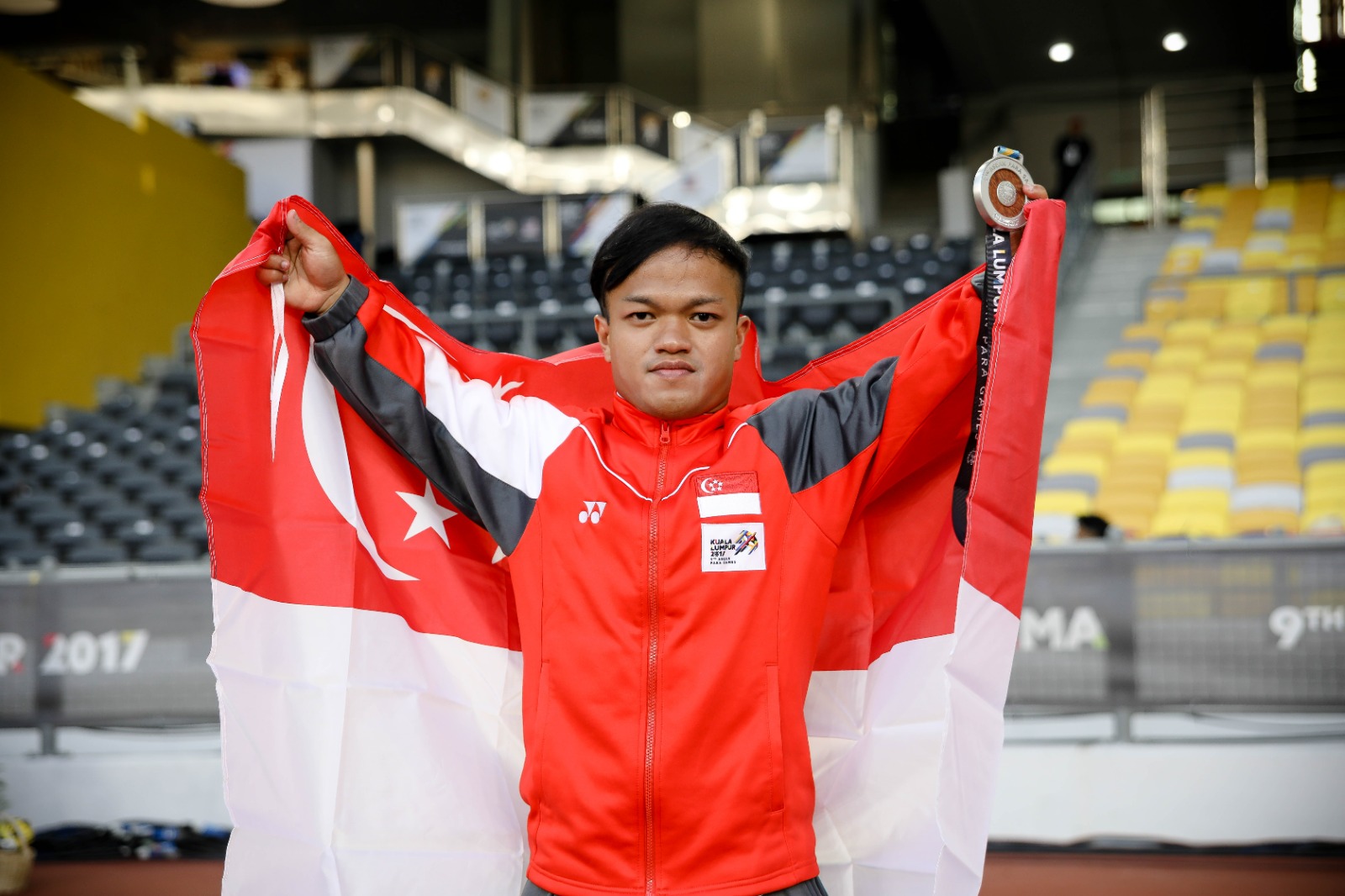 (TeamSG Shot Putter Md Diroy Noordin)
(TeamSG Shot Putter Md Diroy Noordin)
By Desmond Boey & Danny Lum
The Olympics saw the crème de la crème from each sport competing for personal and national glory; a display of close to, if not already, perfect physique and skills. And over at the Paralympics, we will witness yet another series of human excellence, one of overcoming the odds – in the form of physical, visual, and or intellectual impairments – to perform the best that each athlete can.
Competing in the F40 category for short stature, Team Singapore's Paralympic shot-putter Muhammad Diroy Noordin has had to learn what it takes to excel in his event. While various ‘ideal techniques’ have been well established in able-bodied sport, much less information is available for Paralympic sports because of their varying physical abilities.
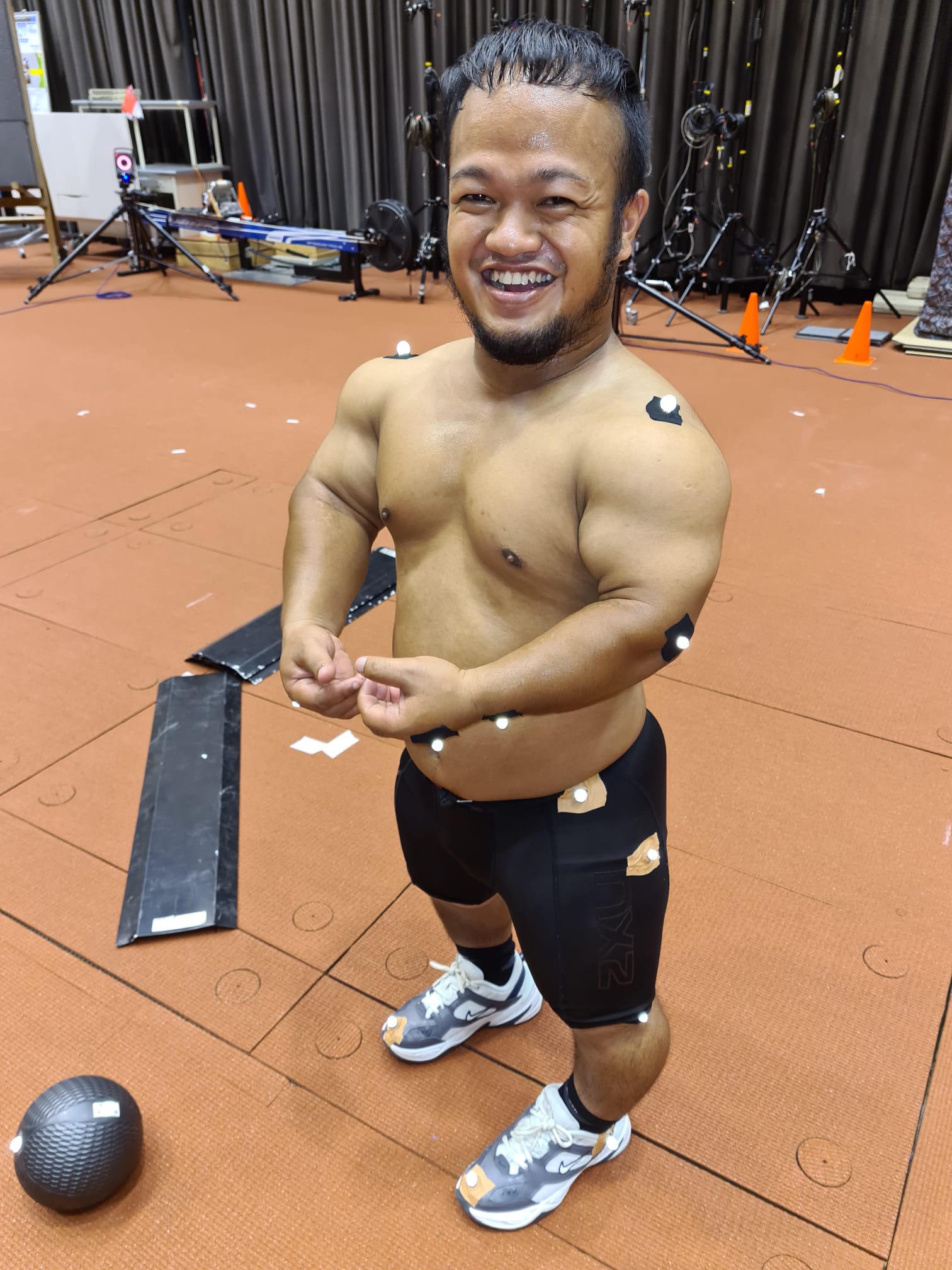 (TeamSG Shot Putter Md Diroy Noordin)
(TeamSG Shot Putter Md Diroy Noordin)
29 year old Diroy however, is not alone on this journey. Assisting his coach Muhamad Hosni, is a team of sport scientists from the Singapore Sport Institute (SSI). “Working with Diroy has been challenging in a positive way. We take reference to what the best in the world are doing in able-bodied shot-putting, and adapt it to what Diroy is capable of. At the end of the day, Physics is Physics, and each athlete is unique. By understanding the principles of what makes a shot fly far, coupled with a clear awareness of Diroy’s physical abilities, we are able to suggest tweaks to his technique that could improve performance” explains his sport biomechanist, Desmond Boey.
Through the season, with the various restrictions during the pandemic, 29 year old Diroy has been taught how to independently review his throws during training with his coach’s guidance. Armed with an iPad on tripod set to constantly replaying film from the last 20 seconds, the 2-time Paralympian is able to immediately get visual feedback on his last throw to complement the verbal feedback coach provides. “Some athletes respond better to verbal feedback while others are more visual. Having both coach’s feedback and the video replay allows Diroy to quickly visualize the cues from coach in order to improve on the next throw” says Boey.
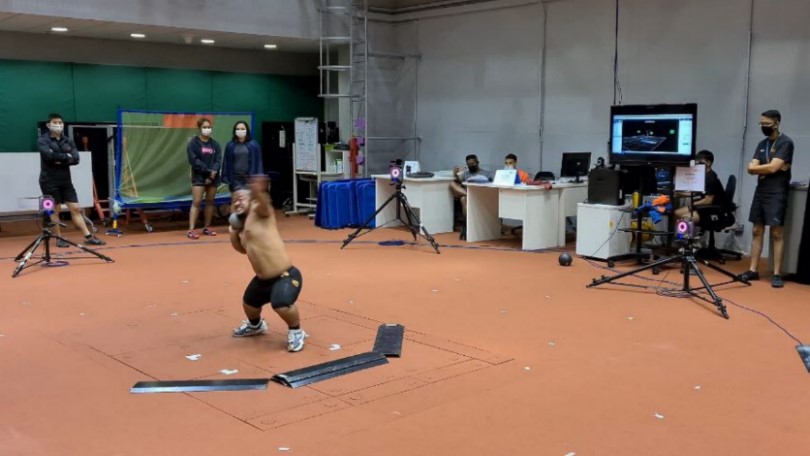 (TeamSG Shot Putter Md Diroy Noordin - Photo by SSI)
(TeamSG Shot Putter Md Diroy Noordin - Photo by SSI)
Diroy has also visited the SSI Biomechanics lab several times to have his shot put technique assessed in 3-dimensions. Unlike 2D videos that display the movement in one view, through these 3D analysis, every aspect of the body’s movement and how it eventually contributes to the end outcome, can be investigated to identify any areas that require improvements.
“If we think of shot put simply, the goal is to accelerate the ball from the initial push with the legs all the way, until the point of release at the fingertips. With the 3D motion capture system, we can track the speed of the ball, identify the phases where the ball starts to slow down and then study the causes, typically in body movement, for that before making recommendations on how to improve” explains his sport biomechanist. Their latest intervention took feedback to another level by utilizing the 3D motion capture system, to provide immediate auditory feedback the instance when the shot put’s speed decreases. That means, both coach and athlete are aware of exactly which phase they should focus their attention, in the lead up to the Paralympics.
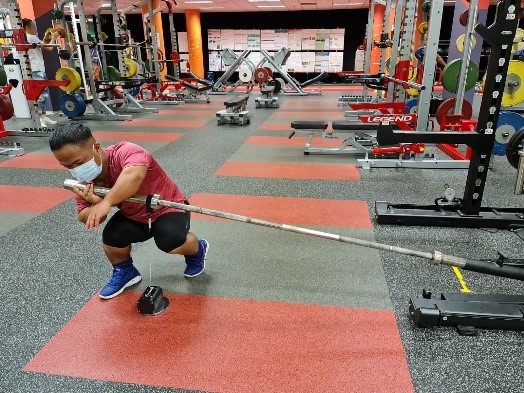 (TeamSG Shot Putter Md Diroy Noordin - Photo by SSI)
(TeamSG Shot Putter Md Diroy Noordin - Photo by SSI)
Apart from honing the perfect technique, strength also plays a crucial role in shot put. In order for Diroy to be able to have the ability to accelerate the ball at a high velocity, he needs to be capable of producing high propulsive force with both the lower and upper body. Therefore, the strength and conditioning coach at SSI, Danny Lum, conducts a series of strength assessments to monitor his training progression.
These include measuring his peak force and rate of force development of the upper limb during the isometric bench press; the time to take off, peak force, peak power and jump height during the countermovement jump; and assessing his ability to produce force when performing a movement similar to the shot put movement – the ballistic landmine press. Based on the results, Danny would then provide feedback to the coach and biomechanist on the strength components that Diroy needs to work on in order to throw further, on top of honing his technique. With the collective wisdom from his coach and sport scientists, and his dedication to training, success at the Paralympics is no further than a stone’s putt away.
Desmond Boey (Associate Sport Biomechanist) & Danny Lum (Team Lead, Strength & Conditioning)
Related Articles
Related Topics
Related Events & Programmes
Related Articles
Related Topics
Related Articles
View All
Related Topics
[BlogPost 164438712123 NSG 2024 Badminton: Senior Div Girls Quarter-Finals, BlogPost 164238055490 Evergreen Aleksandar Duric Still Making Headlines at 53, BlogPost 164170080646 NSG 2024 Rope Skipping: Junior Div Girls Freestyle Team Finals, BlogPost 162884973666 Move and Rest Better With Data From Your Own Body, BlogPost 163393049482 Life Comes Full Circle For Serangoon Garden Secondary School's Fahrish Khan, BlogPost 163258797651 Making Golf a Sport for All, BlogPost 162512222328 NSG 2024 Sepaktakraw: Senior Div Yuhua Primary School vs Qihua Primary School, BlogPost 162233592997 Gritty Lions Suffer Loss to China, BlogPost 162089384371 On Your Mark, Get Ready, Go Running, BlogPost 161670652697 Lions' Excellent Showing Against China, BlogPost 161435270031 Ogura Optimistic for Exciting Clash against China, BlogPost 161127614758 The Future of Basketball in Singapore: Why 3x3 is Here to Stay, BlogPost 161033673012 The Active Lifestyler's Guide to the New ActiveSG Delta Sport Centre, BlogPost 161128356680 Grand New Champions Crowned at WTT Singapore Smash 2024, BlogPost 160844835218 NSG 2024 Table Tennis: C Div Boys Pool Round, BlogPost 160210745115 NSG 2024 Basketball: Senior Div Girls Tampines Primary School vs Frontier Primary School, BlogPost 159881180544 Whirlwind Return to Women's Football, BlogPost 159633541417 Singapore Smash to Elevate a New Legacy, BlogPost 158983580420 NSG 2024 Rugby: B Div Damai Secondary School vs Peirce Secondary School, BlogPost 159003960202 SFA Fiesta: Kicking off 2024 to a Roaring Start, BlogPost 158830735126 NSG 2024 Football: B Div Girls Preliminary Round Meridian Secondary School VS Bowen Secondary School, BlogPost 158536989718 Team Nila Volunteers Recognized At Awards Ceremony, BlogPost 158270107806 NSG 2024 Hockey: B Div Boys Preliminary Round Raffles Institution VS St. Hilda Secondary School, BlogPost 157966862615 NSG 2024 Floorball: B Division Preliminary Rounds Kick Off!, BlogPost 157562433712 What Is Safe Sport?, BlogPost 157559446197 Sengkang Secondary: Cultivating Well-Rounded Footballers, BlogPost 157368261167 New National Training Centre for Cricket at West Coast Ground, BlogPost 155340164987 Active Ageing with Joey Bonifacio, BlogPost 155930815517 Inaugural Singapore Youth League kicks off from 24th February 2024, BlogPost 155340164727 Bukit Canberra : the Coolest Spot in the North, BlogPost 155368905255 How Padang Fandi Inspired Ayden to Chase his Dream, BlogPost 154755572826 Ageing Backwards with Elizabeth Cheang, BlogPost 154094657315 Running For Fitness, BlogPost 153318636178 Excitement Builds for FIBA 3x3 Asia Cup 2024, BlogPost 153198644247 World's Top Four Confirmed for 2024 HSBC Women's World Championship, BlogPost 149413941770 Cultivating Your Kids’ Interest in the Outdoors, BlogPost 149413941163 Making Sport More Appealing for Our Kids, BlogPost 149412549409 Solo Or Team Sport – Choosing the Best for Your Child, BlogPost 151197478798 Former Lions Stalwart Baihakki Khaizan Sheds Light on New Accreditation to Elevate Grassroots Football and Youth Development, BlogPost 80703591291 New Year, Fitter You! Here are the top 3 workouts for the New Year, BlogPost 81171151456 7 Reasons Why Sports are Great for Children’s Mental Health, BlogPost 80542065330 17 Best Yoga Classes & Studios in Singapore [+ Rating & Prices], BlogPost 149404351798 From Brush to Lens: A Student's Journey in the World of Art and Sports Photography, BlogPost 149402825063 The Benefits of Active Parenting, BlogPost 149397832009 Sweden Claim 9th Straight Gold at the Women's World Floorball Championship, BlogPost 149397831449 Lion City Sailors Win 2023 Singapore Cup, BlogPost 148511324266 Pitch Perfect with Jonathan Teo, BlogPost 148511724402 Seniors: Increase your flexibility bit by bit with these stretches, BlogPost 147866574167 A Valuable Experience In Spain for Singapore's National Development Centre U-14 Boys, BlogPost 146915317264 How one magical Kallang night changed the lives of Abirami and Daania forever]









